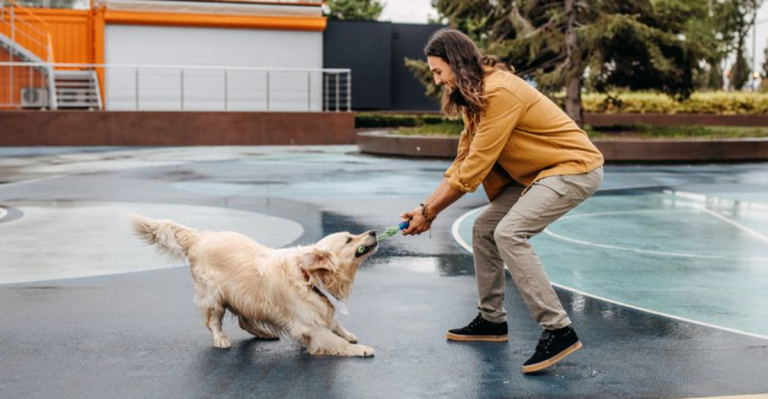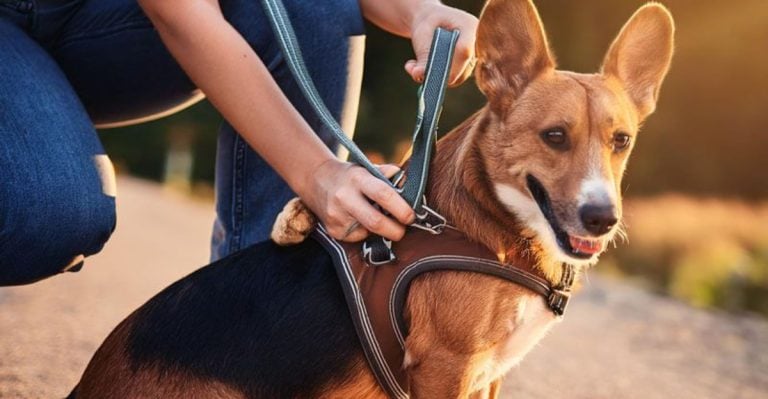20 Tricks I Used to Socialize My Incredibly Shy Beagle (It Works on Other Breeds Too)
When I first brought my beagle home, I expected tail wags and curious sniffs. Instead, I got trembling, hiding, and a dog who wanted nothing to do with the world.
She wasn’t aggressive—just painfully shy. It broke my heart to see her so unsure of everything, especially other dogs and people. But I refused to give up on helping her build confidence.
Through trial, error, and a lot of patience, I discovered what really works. These 20 tricks didn’t just help her come out of her shell—they transformed her into a social butterfly.
And the best part? They work wonders on other breeds, too.
1. Used High-Value Treats as Social Bait
Bribery works. I always had chicken or cheese on hand to lure my beagle into social moments. Food can be an irresistible motivator for many dogs, especially those who are shy.
By associating people and new experiences with delicious treats, I gradually helped her to view social interactions as positive events. This method requires patience but yields rewarding results.
Imagine the joy of watching your timid beagle approach someone with a wagging tail, all because of a simple piece of cheese. It’s a powerful reminder of how small gestures can make a significant difference in socialization efforts.
2. Introduced Calm, Confident Dog Friends
Pairing her with mellow dogs helped ease her in—no overwhelming energy to scare her off. Gentle companions played a huge role in making her feel at ease.
Finding dogs with a stable temperament allowed my beagle to observe and learn without feeling intimidated. Their easygoing nature acted as a security blanket.
Soon, she began to mimic their interactions, gradually building her confidence with every wag and sniff. This approach highlights the importance of choosing the right companions to foster social growth.
3. Visited the Same Park at the Same Time
Routine helped build her confidence. Familiar faces and scents made everything feel less scary. Regular visits transformed a once-daunting environment into a comforting space.
By sticking to a consistent schedule, my beagle began to anticipate who and what she’d encounter. This familiarity bred a sense of security.
The transformation was incredible; she went from hiding behind me to eagerly trotting forward as if she owned the place. Consistency truly is key in helping shy dogs open up to the world.
4. Practiced Sit-Stay Near Groups of People
We started far away and moved closer over time, using basic commands as grounding exercises. These sessions were our trust-building moments.
Gradually increasing proximity to groups helped her become desensitized to the hustle and bustle. Commands like sit and stay provided a sense of control.
Practicing these commands amidst distractions enabled her to focus and remain calm, turning previously nerve-wracking scenarios into manageable experiences. This technique allowed her to face social situations bravely and confidently.
5. Used Long Leads in Open Areas
She had freedom to explore people and dogs without feeling trapped. Long leads offered her the autonomy to make choices at her own pace.
Exploration became a central theme in our socialization journey. With ample space to move, she could approach or retreat as she felt comfortable.
This newfound freedom significantly boosted her confidence, allowing her to engage without fear. Open areas and long leads were a game-changer in her path to becoming a more social pup.
6. Let Her Watch Other Dogs Play First
Spectating gave her a mental blueprint before she joined the fun. Watching from a safe distance allowed her to study doggy interactions without feeling pressured.
Observation time was essential for her understanding of social cues. It served as a non-threatening introduction to what play looked like.
Soon enough, she began to join in, using the patterns she had memorized from her vantage point. This method emphasized the value of patience and the power of observational learning.
7. Praised Every Small Social Win
Whether it was sniffing another dog or letting a person pet her, I celebrated it. Each small step forward was a victory worth recognizing.
By acknowledging these successes, I reinforced her positive behavior and encouraged more of it. Praise became her reassurance.
Watching her glow with pride after each compliment was heartwarming. Celebrating these moments strengthened our bond and her confidence in social settings. It’s a testament to how encouragement can be a powerful motivator.
8. Brought Along a Confident “Helper Dog”
Borrowing a friend’s social butterfly pup worked wonders for modeling behavior. The helper dog served as a guide and mentor.
With the help of this furry role model, my beagle learned by example, watching and emulating social behaviors she hadn’t dared try before.
The presence of a confident canine companion provided the assurance she needed to venture into new territories. It’s a strategy that highlights the influence of positive role models in a dog’s social development.
9. Scheduled Mini “Exposure Walks”
We’d walk past a café, playground, or dog park and just sit and observe. These outings allowed her to soak in the environment at her own pace.
Exposure walks were about gentle introductions to diverse scenarios. They provided a safe space to acclimate to various stimuli.
Through consistent exposure, she became more accustomed to these environments, shedding her initial apprehension. This approach emphasized watching and learning, crucial steps in her social journey.
10. Taught Her a ‘Touch’ Command
This simple game redirected her attention and built positive associations with hands. The ‘Touch’ command became a fun and interactive tool.
As we practiced, she learned that a gentle tap on the hand often led to praise and treats. This association made human interaction less intimidating.
Over time, it became a favorite exercise, fostering trust and enhancing our communication. This game showcased the power of positive reinforcement in building confidence.
11. Used Snuffle Mats and Toys Around People
Giving her calming enrichment near new people helped bridge the comfort gap. Snuffle mats turned anxiety-filled moments into engaging playtime.
These tools provided mental stimulation and redirected nervous energy. They became her go-to distraction in unfamiliar settings.
Using toys as a buffer allowed her to interact with new faces without feeling overwhelmed. This strategy highlighted how environmental enrichment can facilitate social ease.
12. Had Friends Toss Treats Without Eye Contact
It showed her people equal food, without the pressure of interaction. This method built positive associations with humans from a distance.
Friends participated in creating a low-pressure environment where she could engage at her comfort level. Treat-tossing became a bridge to more direct contact.
Over time, she began approaching them willingly, curious about the source of her treats. This tactic underscored the importance of subtle interactions in building trust.
13. Attended Small, Structured Training Classes
A group setting with guidance helped both of us gain confidence. Training classes provided a controlled environment for social learning.
The structure of these sessions offered predictability and routine, soothing her anxious tendencies. It was a safe space to practice social skills.
These classes reinforced positive behavior through guided interactions and clear expectations, paving the way for social success.
14. Practiced “Look at That” Desensitization
She got rewards for noticing people or dogs—no pressure to interact. This desensitization method turned potential stressors into opportunities for treats.
The ‘Look at That’ game helped her remain calm in situations that previously triggered her shyness. She learned to observe without reacting.
As her confidence grew, her tolerance for various stimuli increased, marking another step forward in her social journey. This practice underscored the power of rewarding calm observation.
15. Let Her Hide and Observe on Her Terms
Sometimes she just needed space. I respected it without forcing engagement. Allowing her to observe from a safe distance gave her control over her interactions.
This approach acknowledged her boundaries, offering comfort in knowing she could retreat if needed. It fostered a sense of security.
Gradually, her curiosity took over, leading her to venture out on her own terms. Respecting her pace was crucial in her journey towards socialization.
16. Rewarded Bravery with a Quick Exit
If she was brave for a moment, we left—making her feel safe and in control. This tactic reinforced the idea that she could handle brief social interactions.
By promptly exiting after a courageous act, she learned she wouldn’t be overwhelmed. Her bravery was acknowledged and rewarded.
This method empowered her to take risks, knowing she could retreat if needed. It emphasized the importance of acknowledging and respecting her bravery.
17. Took Her to Pet-Friendly Stores
Low-stakes indoor environments like pet stores offered short, manageable social exposure. These stores became our training grounds for real-world socialization.
The controlled indoor setting helped reduce external stressors, allowing her to focus on interaction and exploration.
Gradually, she became more comfortable in these settings, translating her newfound confidence to other environments. This tactic highlighted the benefits of starting small in social training.
18. Avoided Overly Crowded Places at First
We kept our distance until she showed signs she was ready to level up. Crowded places can be overwhelming for shy dogs, so we paced her exposure.
Choosing calmer settings allowed her to acclimate to socialization without anxiety. It was all about setting her up for success.
As her confidence grew, we gradually introduced busier environments, ensuring she felt secure at each step. This approach emphasized the importance of gradual exposure.
19. Talked to Her During Social Outings
Hearing my voice consistently helped her relax in new environments. Talking to her provided a sense of familiarity amidst the unfamiliar.
My words became an anchor, guiding her through potentially stressful situations. It was our secret language of reassurance.
This communication strengthened our bond and helped her navigate the world with more confidence. This practice underscored the calming effect of a familiar voice.
20. Stayed Calm Even When She Wasn’t
My mood set the tone. If I freaked out, so did she—so I kept it chill. Remaining calm during her anxious moments was crucial in her socialization journey.
She looked to me for cues, and my composed demeanor provided reassurance. It was like being her emotional anchor.
Over time, my calmness helped her build resilience and confidence in social situations. This tactic emphasized the ripple effect of calm energy.


























